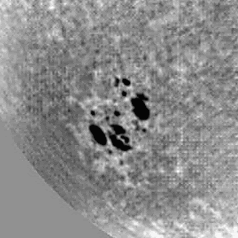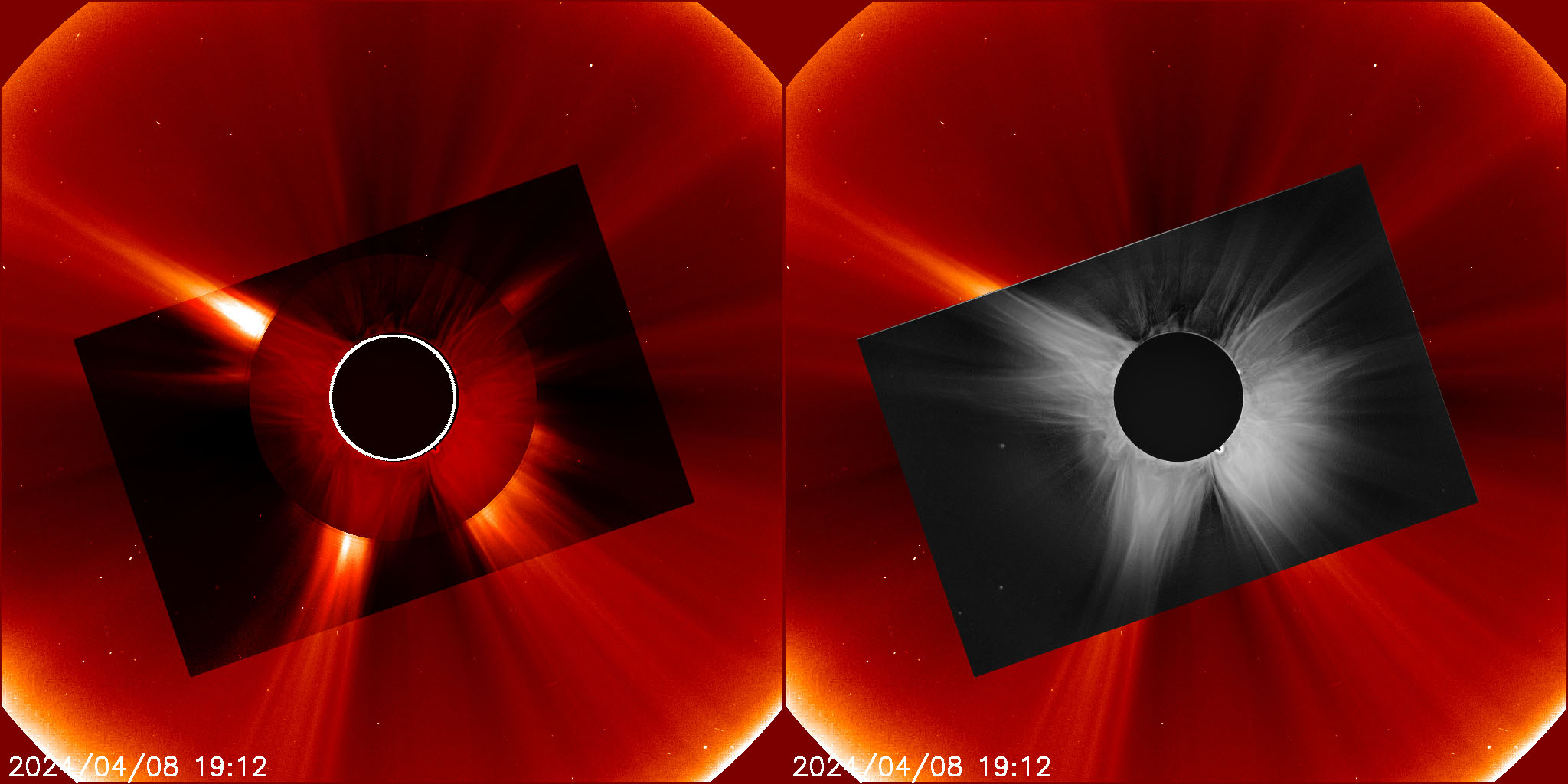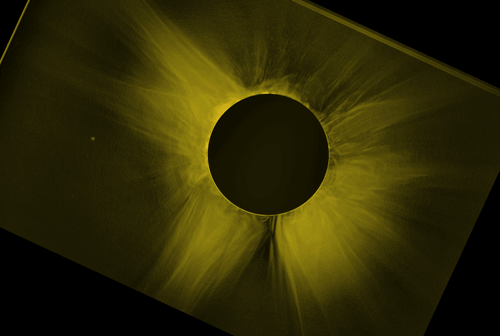X-class solar flare observation campaign
Program Overview
Solar flares have a significant impact on space weather and life on earth. They are the most powerful explosive events in our solar system. The DEB Initiative is conducting daily solar observations in hopes of imaging solar disk changes during a white light X-class flare. These high energy solar flares produce large increases in the brightness of the solar disk in the flaring region that can be observed with the DEB Initiative solar telescopes at high cadence rates capable of capturing dynamic data as the flare occurs.
The DEB Initiative observation setup is capable of sub-second frame rate, full solar disk imaging in white light. The highest frame rates possible for the setup (up to 60fps) are achievable with a 15 second image capture on a one minute cadence. In other words, an observation setup operating at maximum frame rate can acquire 900 images (60 fps * 15 seconds) each minute. To sustain this high frame rate and achieve continuous solar observations, four DEB setups in the telescope network can be used to image the Sun at alternating quarters of a minute starting at 0 seconds, 15 seconds, 30 seconds and 45 seconds. At this high frame rate, just over 400MB of data is acquired each minute or around 25GB per hour per setup. While it is not possible for teams to save all data from several observations, we can save data from approximately +/- 1 hour around a GOES (Geostationary Operational Environmental Satellites) detected X class flare.
How to Participate
This observation campaign is in beta phase and is open to any existing DEB team. Team leaders should review the Daily Observation Procedures.pdf document and follow the observation checklist on the day they observe. Most importantly, make sure you sign up for an observation time in the document “Daily_Observations signup_dates.xlsx file where dates = the current week you are observing. During the sign up, you will note which quarter you are observing to determine which script you will run. Signing up allows everyone to see who is observing so we can coordinate observation coverage and notify observers in the event of a detected flare. When you sign up, list your time in UTC, but use your current local date. You can lookup the UTC time for your timezone using a tool like https://www.timeanddate.com/time/difference/timezone/utc.
Data is saved automatically during the observation and quick look images are uploaded once every minute to debra.physics.siu.edu. You can use the quick look images to verify you are on target throughout your observation time. Color coding on debra has been added so anyone can easily see what sites are currently or have recently observed.
Before you delete any data from your laptop, check the online signup document to see if there was a solar flare on the day you observed. If not, you can safely delete the data. If there was a flare, keep the data and coordinate with the DEB team to upload your raw data FITS files to us.
Thank you for participating in DEB solar flare observations. During this beta phase, we welcome feedback from teams on procedures so that we can make improvements.
White light X4.5 flare observed 14 Sep 2024

White light X4.5 flare observed on 14 Sep 2024 by DEB site 43 in Brandenburg, KY operated by volunteer Jonathan Mangin. Images show detail of the flare region over approximately 10 minutes before (1), and during (2) peak flare activity.

Animation of 14 Sep 2024 flare observation. The animation shows an average of 50% of raw images taken at 60 second cadence with the flare appearing as a small white spot moving below the sunspot group. The raw data is at about 20 frames per second which would be a new regime for white light flare observations
Coronal Observations
During a total solar eclipse, the Moon blocks the intense direct light from the solar disk revealing the solar corona (the Sun’s atmosphere). It is at this time that ground based telescopes can observe the corona. While a single telescope captures a static image of the corona from one location, the 82 telescopes in the DEB Initiative network collect data from many sites over time showing the dynamics or movement of the corona. This was done during the April 8, 2024 total solar eclipse when 378 DEB Initiative volunteers captured coronal data from Mexico to Canada. This data can be used to study the inner corona and augment space based coronal data collected by the Solar and Heliospheric Observatory (SOHO) LASCO coronagraph, an imaging instrument that creates artificial solar eclipses by blocking out the sun with an occulting disk. The DEB data fills in a gap twice the radius of the sun left in the center of the FOV of the LASCO C2 instrument.

A preliminary DEB HDR image from site 063 (H. Schran) is aligned with the LASCO C2 Coronograph taken during the April 8, 204 total solar eclipse. Image on the left shows DEB coronal data overlayed as transparency. DEB data detail is shown in the region of 1 – 2 solar radii – the size of the occultation disk on LASCO C2. The black circle in the center of the image is the Moon.

Blink comparison of DEB sites 7 (Vail High School students observing in Oklahoma), 63 (Talawanda High School students observing in Ohio) and 33 (Jeremy Wright observing in Maine) . The animated 3-frame GIF is comprised of a single HDR image from each site and shows coronal evolution over approximately 40 minutes. Lots of interesting coronal changes are already apparent in this preliminary data!
Training Videos
DEB training videos were made possible through our partnership with Einstein’s Incredible Universe (EIU), an NSF funded project led by Cosmic Picture. Videos were produced by the Center of Teaching Excellence at SIU Carbondale. They are available in two different versions. The first version of the videos is split into two approximately 20 minute segments. These videos were produced specifically for our EIU girl groups, but are excellent training for any new DEB teams.
Training videos featuring two former Citizen CATE Experiment 2017 volunteers, Adriana Macieira and Sammy Hasler, are in two parts and available on Vimeo.
DEB EIU training part 1, Introduction and Assembly
DEB EIU training part 2, Observation Procedure
DEB Training featuring the DEB Coordinator, Chris Mandrell, is split into several small segments available on Vimeo. Note, this is the same training as above just explained in a slightly different way and split into smaller segments. These shorter segments are useful for teams looking to watch a shorter clip on a specific subject.
Observation Equipment
We have distributed all our DEB equipment and have 82 teams in the project. Some of the teams are self funded and have purchased their own equipment. Teams that had existing equipment such as a tracking mount and a laptop have been able to participate by purchasing only the additional components they need. A full list of the equipment is provided below. Note that the cost of this equipment is approximately $1,800 per setup.
Mount: iOptron Skyhunter EQ/AZ
Telescope: Askar FMA 180 Pro
Camera: Neptune-M Player 1 Camera
Solar Filter: 60mm Solar Filter, Rainbow Symphony, Black Polymer
Adapter: ZWO M42 to M48 Extender (16.5mm), ZWO T2-M48-16.5
Extension Tube Kit: SVBONY, SKU: F9190A
Laptop: Dell Inspiron 15 3520, 16GB RAM, 1TB SSD
DEB Office Hours
DEB team members with questions about observations encouraged to attend office hours hosted by Chris Mandrell in our DEB Discord Lounge. If you need access to Discord contact your team or regional leader or email us at deb.initiative@gmail.com.
Wednesday: 4 – 5pm central time
Thursday: 9 – 10am central time
